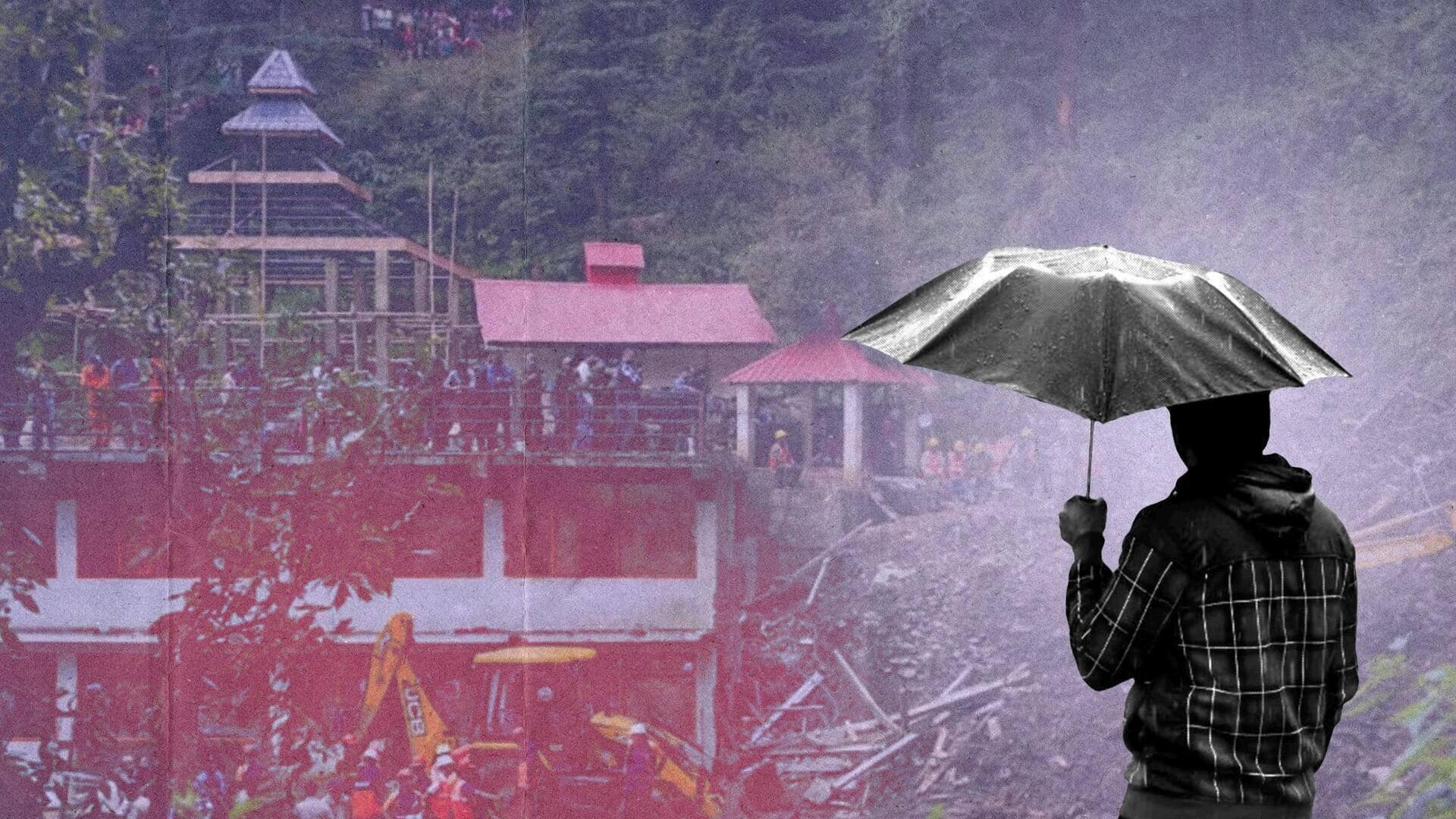
Why it is still raining in mid-September in North India
What's the story
Heavy rainfall drenched Delhi and its neighboring areas on Thursday morning, and it is expected to continue over the weekend. The India Meteorological Department (IMD) has also predicted rain in Uttarakhand from September 12 to 14, and Haryana from September 12 to 15. Meteorologists are "almost certain" that the persistent rains that began in June will continue over Northwest India till October—marking another year of an unusually long monsoon season for the region.
Farming impact
Extended monsoons disrupt agricultural cycles in North India
The extended monsoon season, now lasting much longer than before 1940, is causing significant disruptions for farmers. The "unseasonal rains" in October pose a threat to standing crops in major states like Punjab, Haryana, and Uttar Pradesh. They also shorten the harvesting season, forcing farmers to adjust their crop cycles. "It is definitely concerning because farmers have to harvest crops, and prepare for the next sowing season within a very short window," Dr. M Rajeevan, a senior atmospheric scientist said.
Weather patterns
Low-pressure systems and delayed monsoon retreat
The delay in monsoon withdrawal is attributed to low-pressure systems forming over the Bay of Bengal in September, which infuse energy into a waning monsoon. In recent years, the retreat has consistently been delayed. Last year, it began from West Rajasthan on September 25—eight days later than its normal date of September 17. In 2022, it was late by three days, but a year before that, it did not start withdrawing until October 6—a delay of over three weeks.
New normal
IMD announces 'new normal' for monsoon season
Over the past decade, the trend has only grown, prompting the IMD to declare it the monsoon season's 'new normal.' While onset dates over Kerala remain unchanged, the withdrawal date from West Rajasthan (Bikaner, Jaisalmer) has been revised from September 1 to September 17. Despite spending more time over Northwest India, the monsoon still manages to leave South India by October 15—in time for the arrival of the north-east monsoon.
Climate factors
Potential reasons for delayed monsoon withdrawal
The reasons behind these unusual delays remain unclear. Some scientists suggest it could be part of a "multi-decadal natural variability"—changes that the monsoon exhibits each decade. Others, like senior IMD scientist Dr DS Pai, point to climate change as a potential factor. He noted that the world is already 1.1 degrees warmer than pre-industrial levels, which has increased the atmosphere's moisture-holding capacity and potentially contributed to more intense and frequent rainfall events.